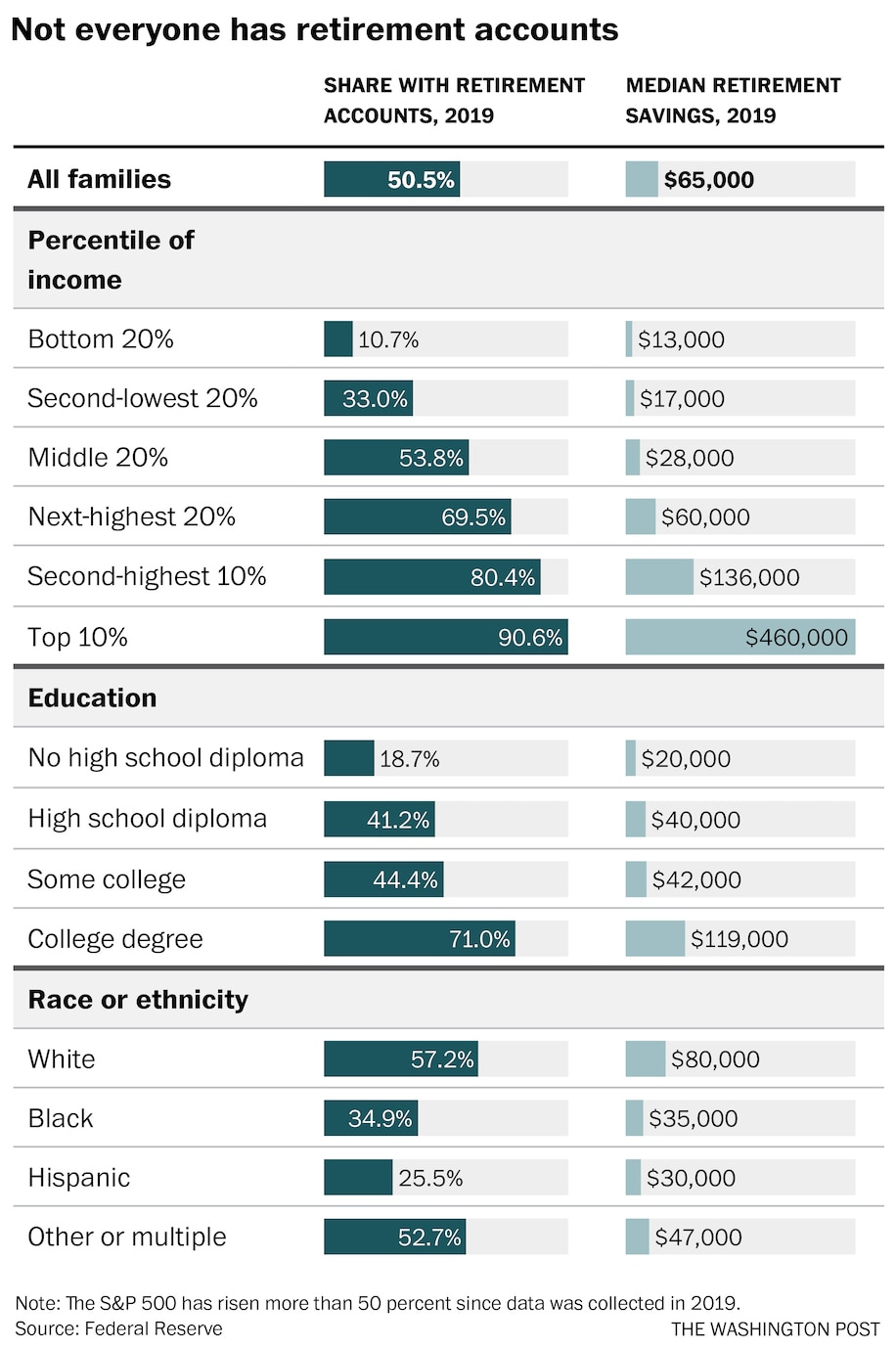Race and class and retirement savings.
This coming June will mark ten years since I taught public school.
It will be ten years that I have received a pension from the Illinois Teacher Retirement System.
I retired with no assurances that I would receive what I was promised. The Illinois General Assembly and Democratic Governor Pat Quinn were on a mission to reduce what I was constitutionally and contractually promised.
I joined with others, marched on the state capital, lobbies state legtislators and hired lawyers to fight the theft. We won and the Illinois Supreme Court ruled unanimously that there could be no diminishment of my retirement benefits.
My teacher pension is a good one even though the federal government denies me what I earned through Social Security in spite of 20 years of Social Security contributions before I started to teach.
That’s a story for another day.
The story for today is about how many Americans, around 80%, barely have any retirement savings beyond Social Security.
The average Social Security benefit is $1,657 per month in January 2022. The maximum possible Social Security benefit for someone who retires at full retirement age is $3,345 in 2022.
The average Social Security benefit is so low that it qualifies you for subsidized housing provided for the those in poverty in Chicago.
When I get challenged about what many public employees earn in retirement through their pension, I say that nobody should work their entire lives and not have to live in poverty as a elderly person or continue to work to live.
Not just public employees. Not just teachers.
Yet hat is far from the current conditions for older folks in America and it is particularly so for the elderly who are Black and Brown.
Slightly more than half of all American families have no retirement savings according to Federal Reserve data from 2019, the most recent available.
As for the role of race and ethnicity, only 34.9 percent of Black families and 25.5 percent of Latinx families have retirement savings, compared with 57.2 percent of white families.
Millions of workers face the prospect of not being able to retire at all, according to a survey from Pew Charitable Trusts.
Pew surveyed 1,000 workers who said they worked at nontraditional jobs — gig workers, freelancers, or day laborers.
For them, old age means facing a dire situation.





